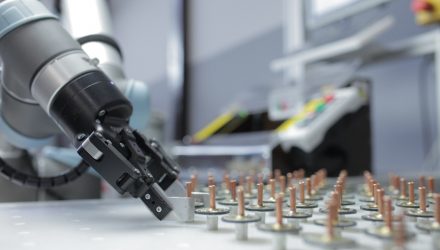What is robotic logistics?
Logistics is the management of the flow of things. These can either be physical things (product, inventory, materials, etc) or even the flow of information.
The logistics industry is huge. I think it’s fair to say that it holds together our modern world. Without logistics, we would all still be living on self-sufficient farms — we would have to, it’s the only way we would survive. Logistics keeps us alive.
Because logistics is so far reaching, it includes a huge amount of different processes. For example: warehousing, ordering, transportation, picking, packing, disposal, delivery, inventory, merge in transit, routing, recycling, expediting, … and that’s just to name a few!
Related: The Role of Artificial Intelligence in Society
Robotic logistics simply means applying robotics to one or more of these processes.
There are obviously a huge number of potential robotic applications. But, here are a few common ones:
- Robotic palletizing — Robots are used to load or unload products and materials from pallets.
- Robotic packaging — Robots are used in both primary processes — to package raw materials — and secondary processes — to package pre-packaged goods into larger boxes, crates, etc.
- Robotic picking — Robots are starting to be used in warehousing and sorting to pick products from shelves.
The future of logistics is now! And it’s going to be robotic.
Why You Should Pay Attention to Robotic Logistics Now
The current boom of logistics robots has been a long time coming — at least 10 years, in fact. At Robotiq, we have been fortunate enough to witness the whole journey. Back in 2008, our CEO Samuel Bouchard wrote a blog post which announced the arrival of the innovative Kiva Systems robotic warehouse. Four years later, in 2012, Amazon acquired Kiva Systems. This acquisition could reasonably be said to be the starting point for a new type of automated logistics.
But why is this year, 2018, the moment to pay attention to robotic logistics?
Well, it seems we are reaching a tipping point. A 2016 trend report from logistics-giant DHL explained that two factors are driving the need for autonomous logistic solutions right now:
- The growth of e-commerce — Product distribution has totally flipped on its head over the last decade. Products are now packaged individually and sent direct to customers, rather than in bulk to suppliers as they were in the past. There is a huge variety of different packaging requirements, the weight of shipments is increasing as heavier items are being bought online, and the speed of distribution has increased too.
- The lack of available workforce — Skills shortages are affecting many industries, not just logistics. There are just not enough skilled workers to fill needed posts. I’ve written before about how robotics can help to tackle skills shortages in manufacturing, and robots are also a solution for logistics.
Robot Technology Comes of Age
There is also a technological reason that logistics is the new “hot industry” for robotics. Several technologies have matured recently allowing them to be viable in real-world logistic applications.
Autonomous Guided Vehicle (AGV) technology is being used in autonomous forklifts, Artificial Intelligence (AI) applications are popping up all over the place, and collaborative robots are allowing robots to work alongside human workers.
As the US Material Handling and Logistic Roadmap from 2017 says: “Oh, how quickly the world is changing. And the supply chain right along with it.”
How will Robotic Logistics Look in the Near Future?
Robots are already being used in logistics, sometimes extensively. Therefore, the logistics of the future will look similar to how it looks today. Over time, robotics will just creep into more and more applications.
